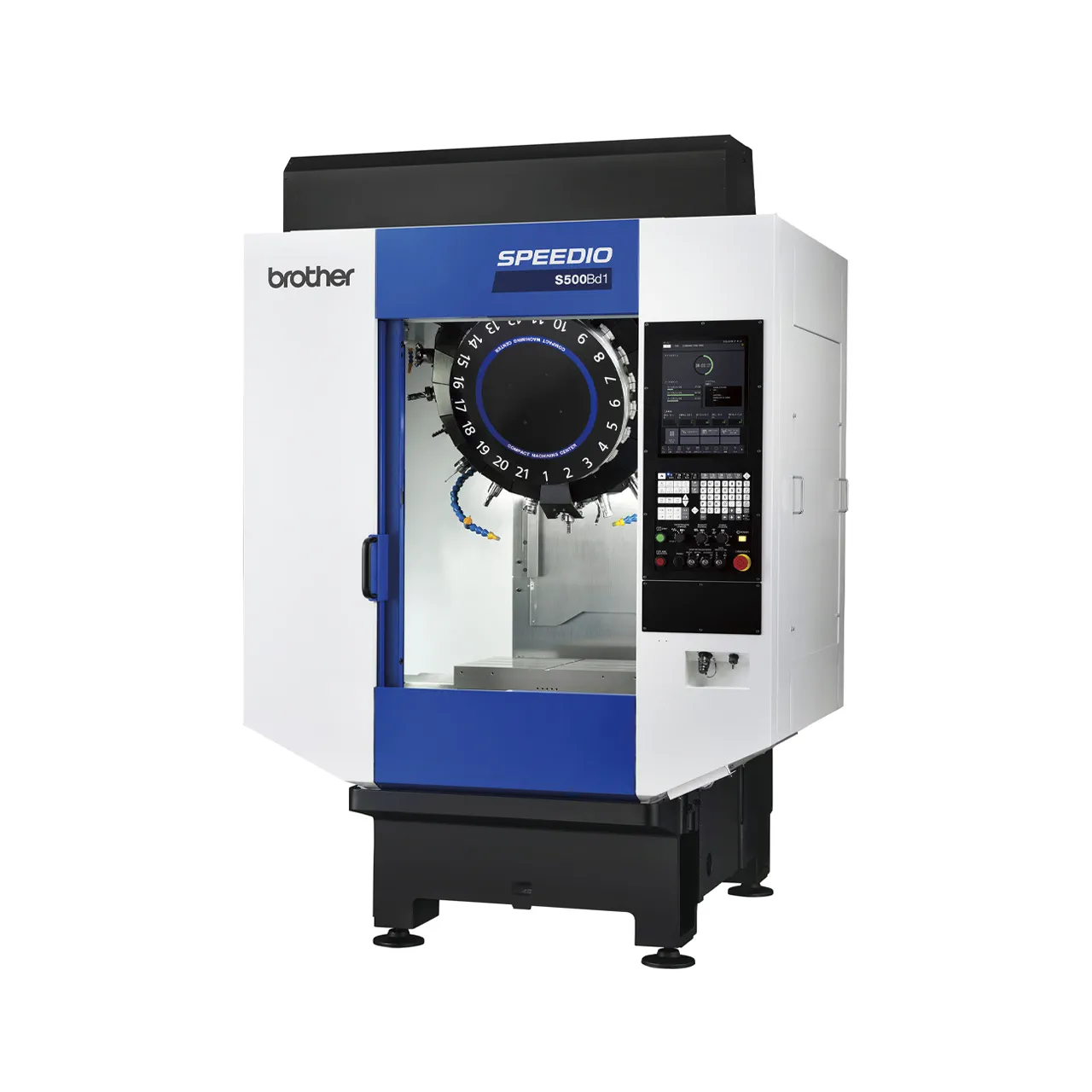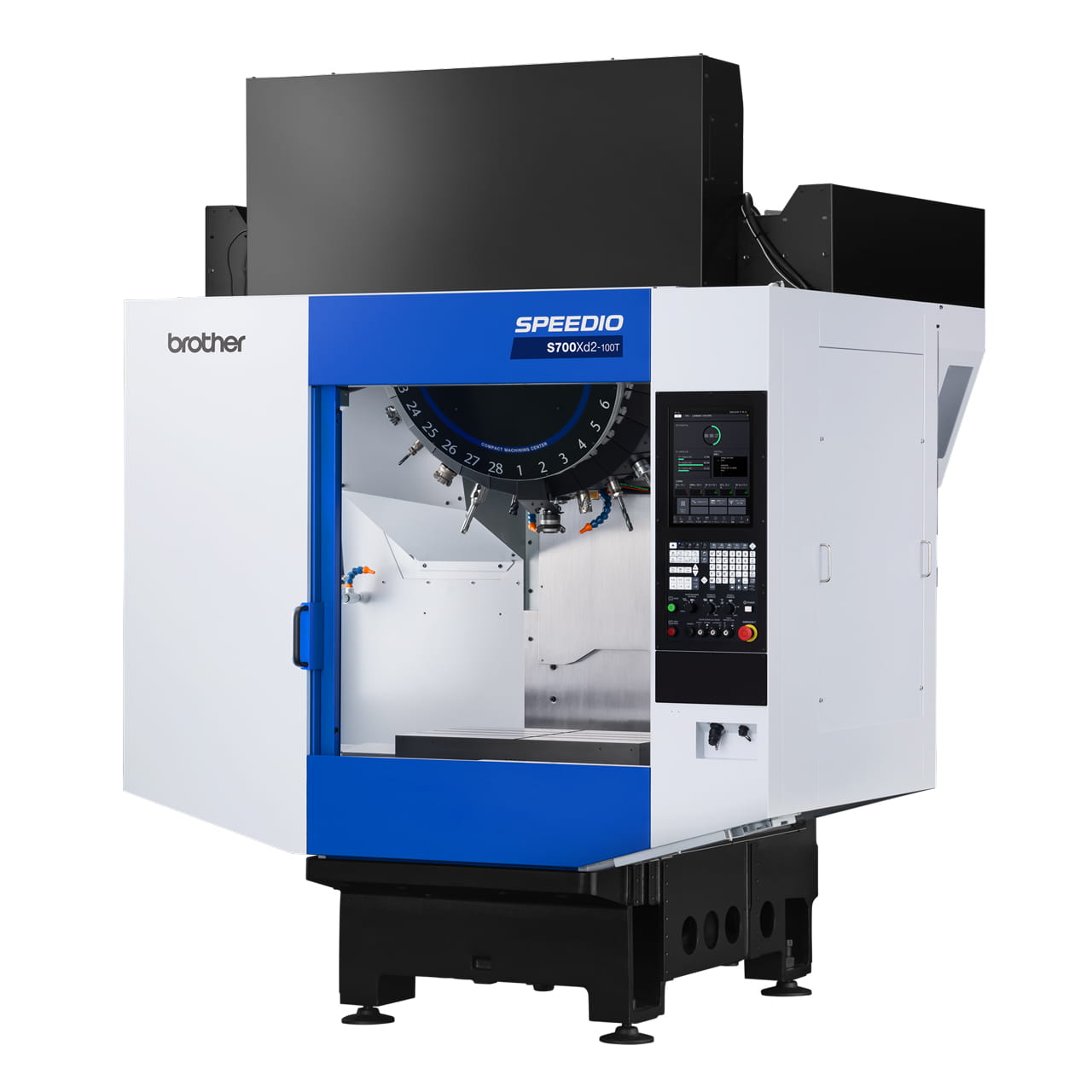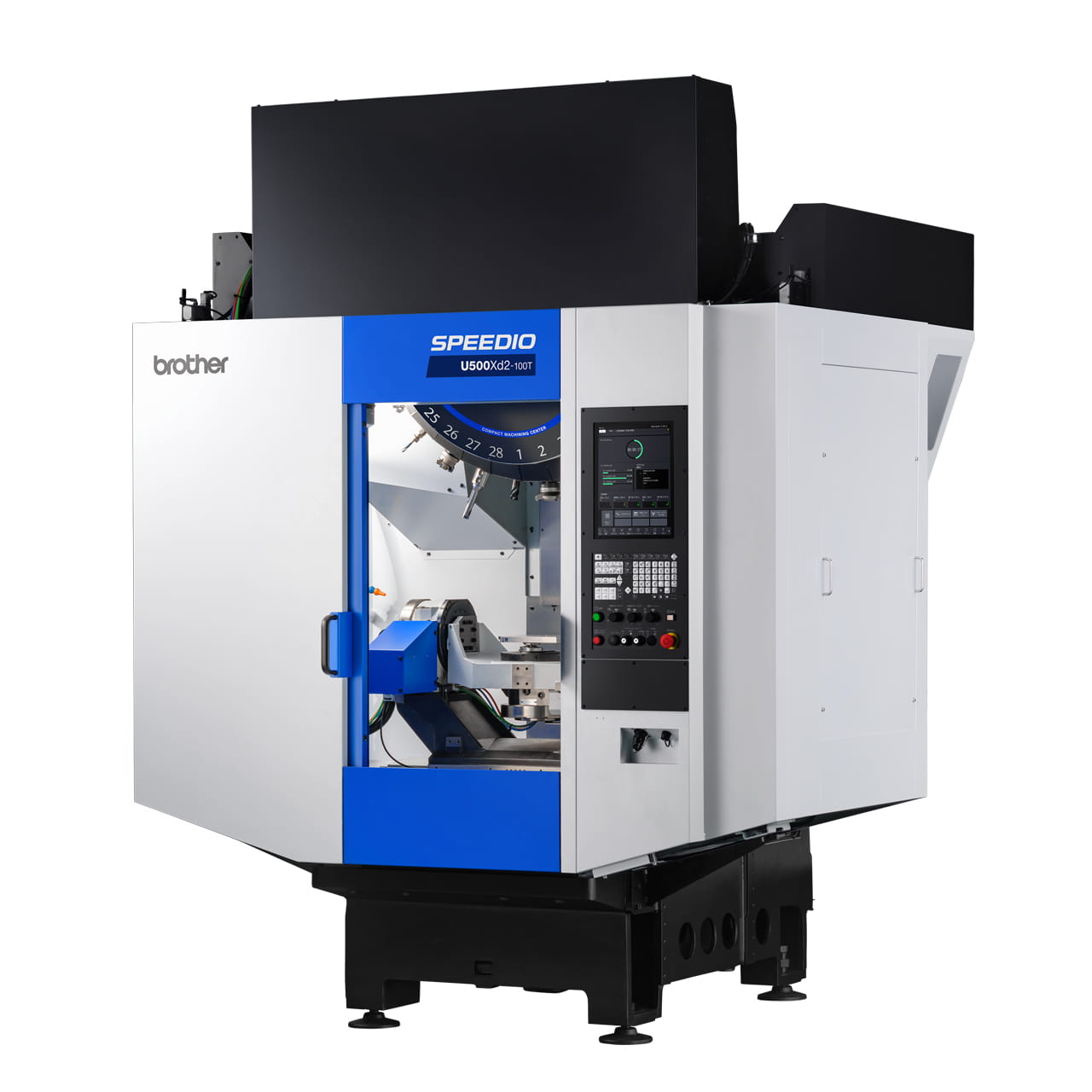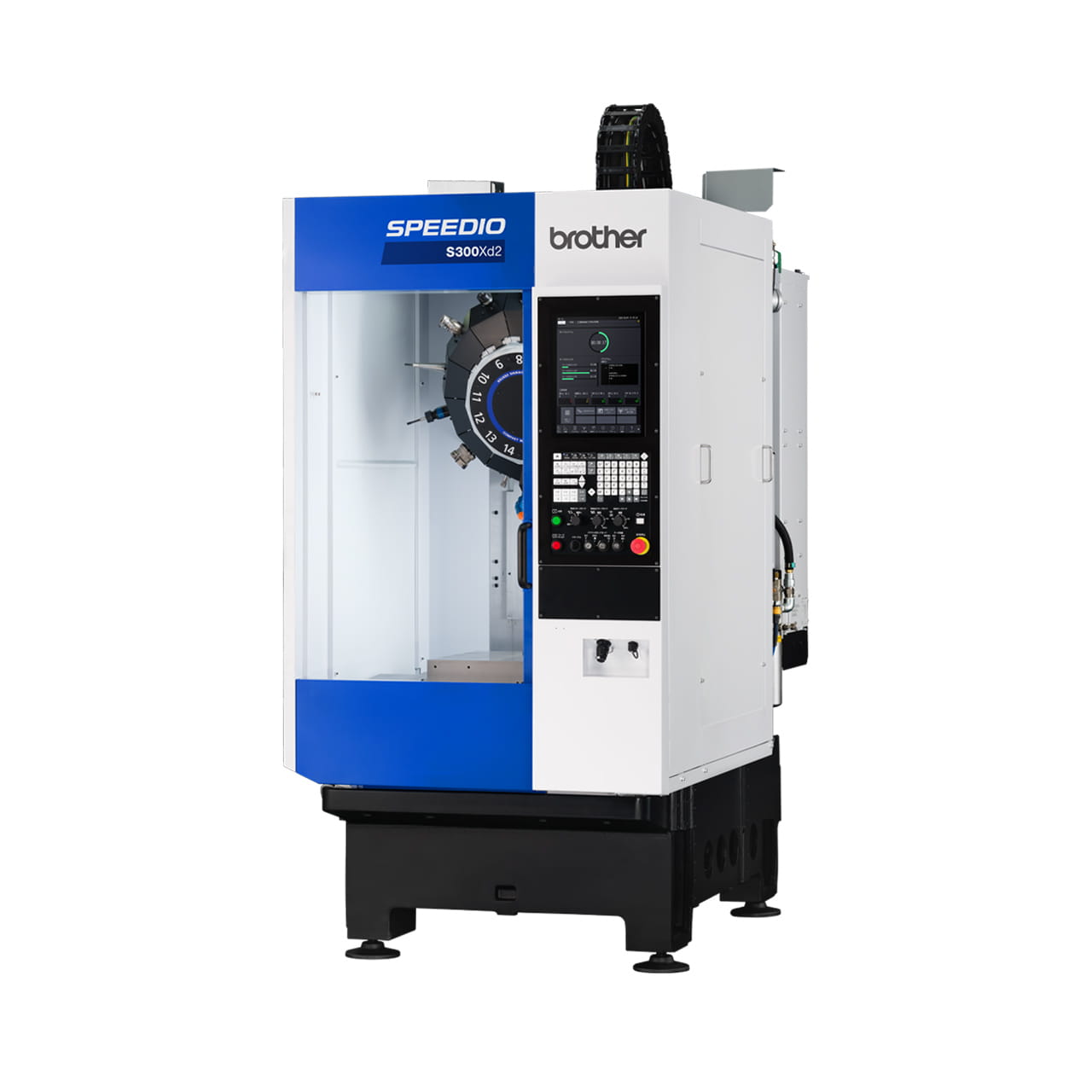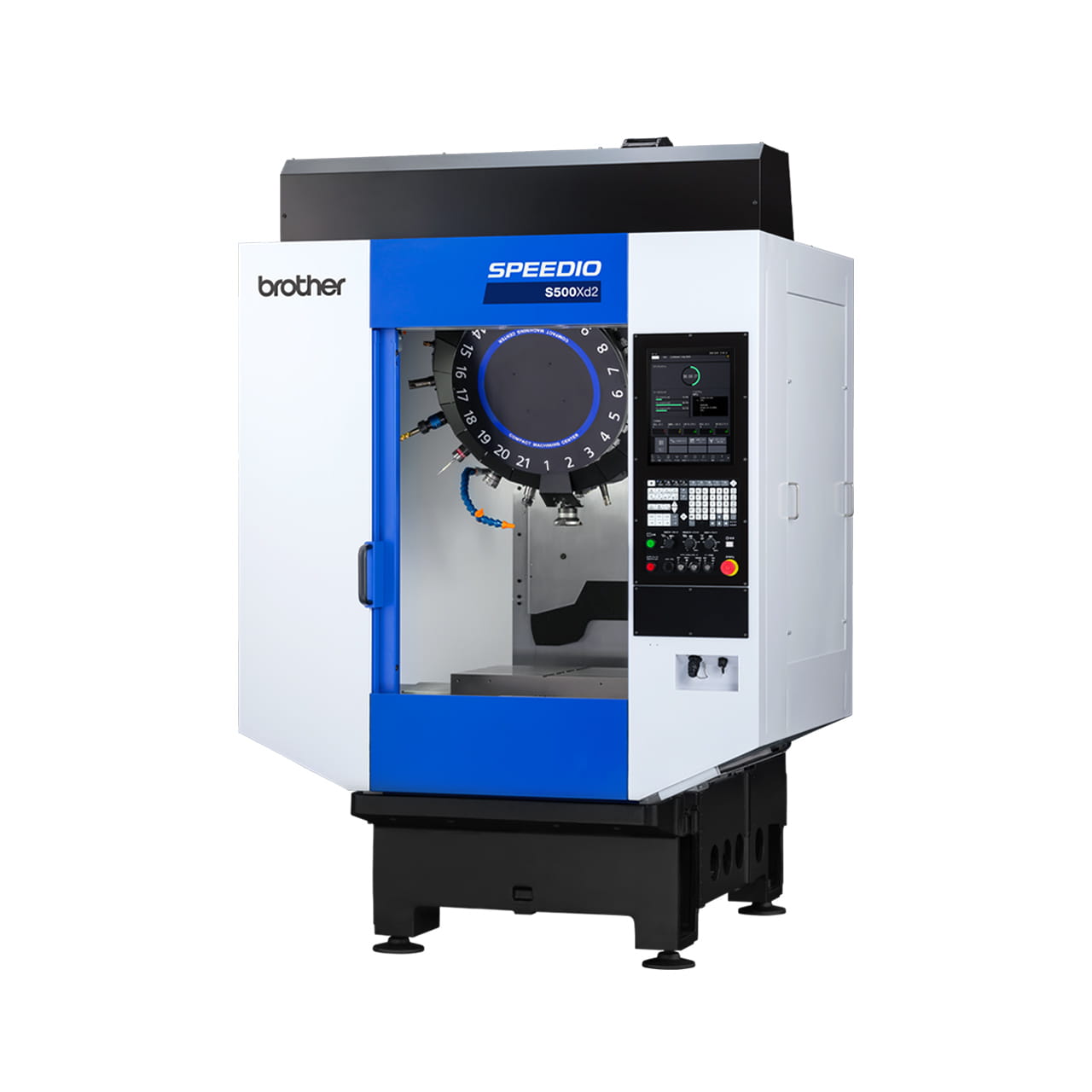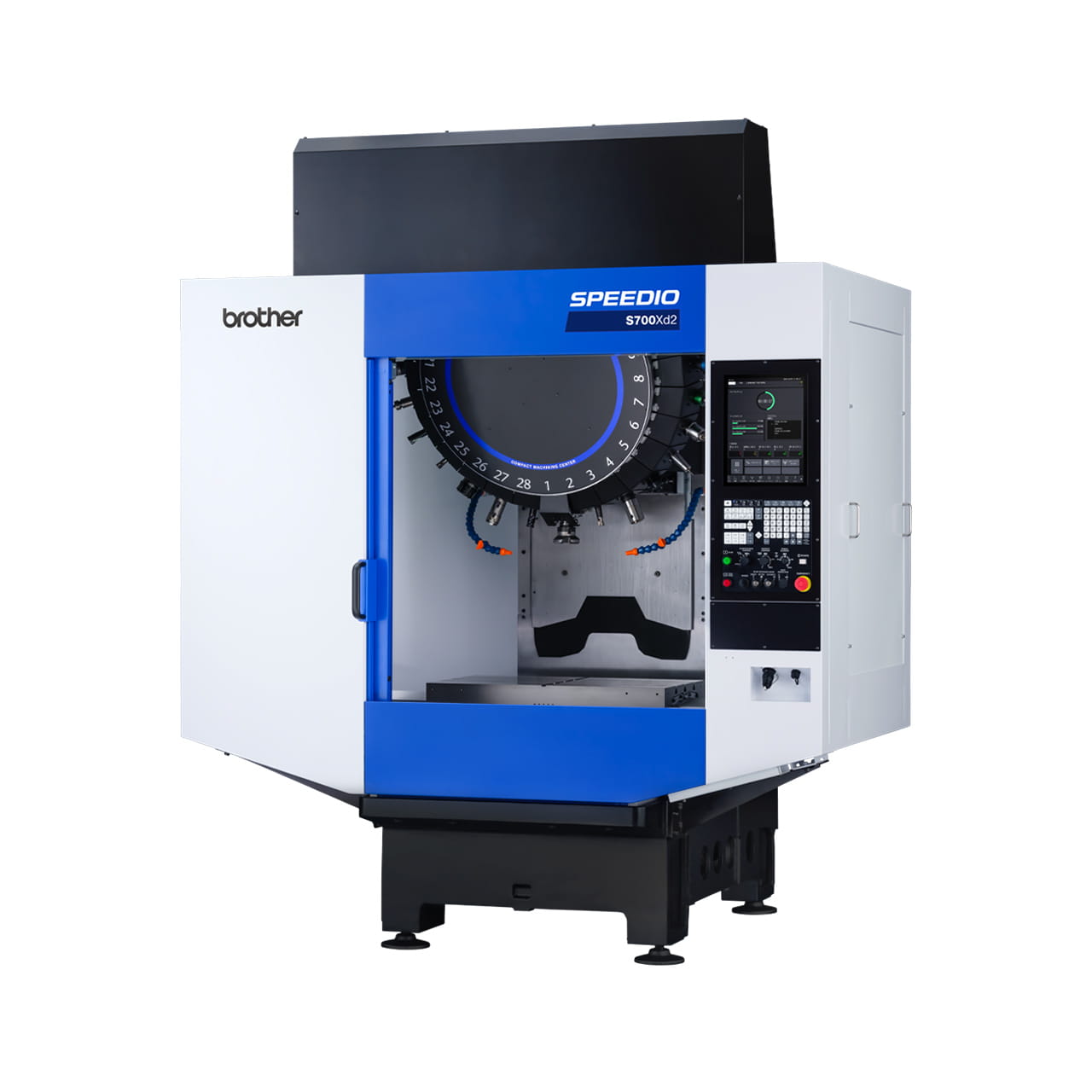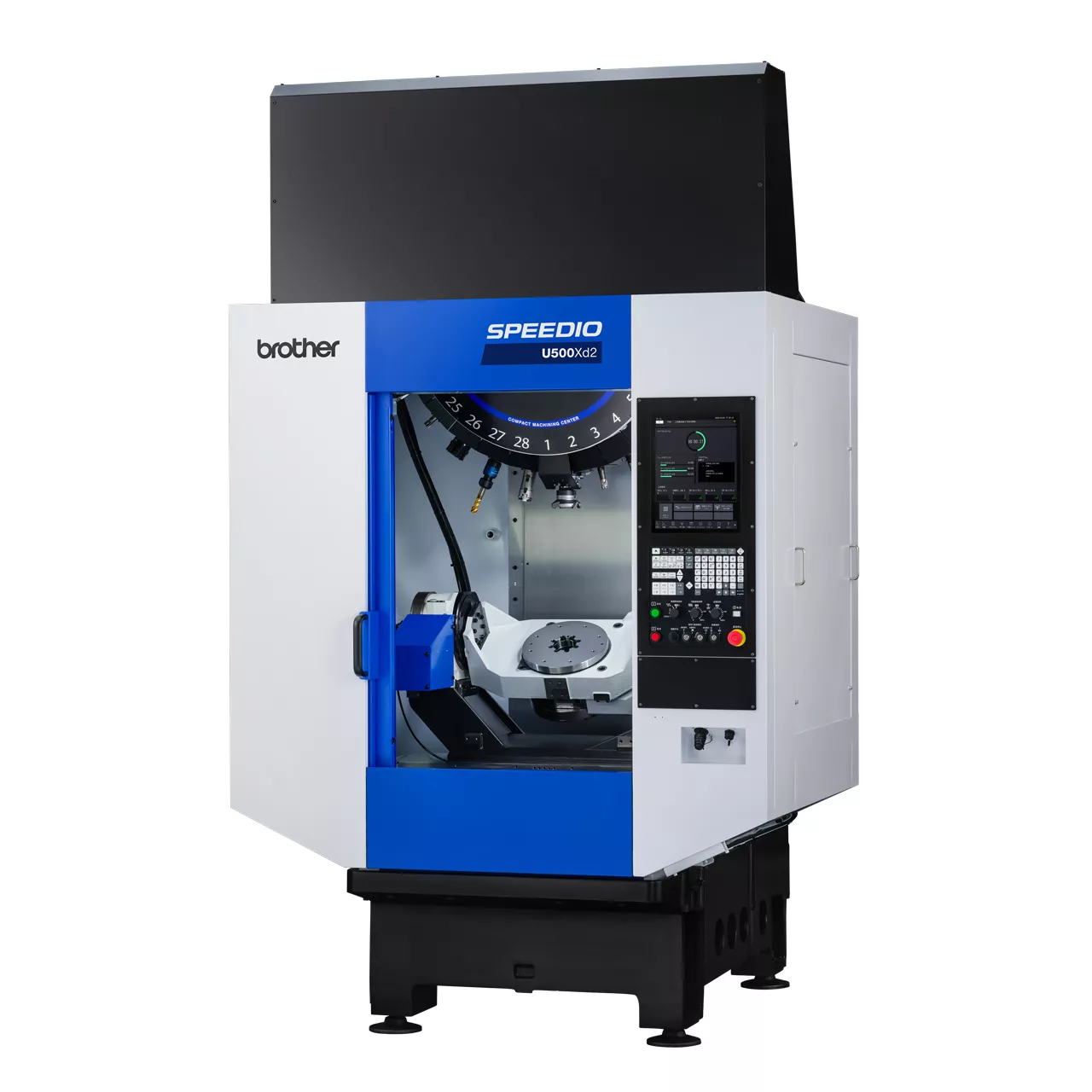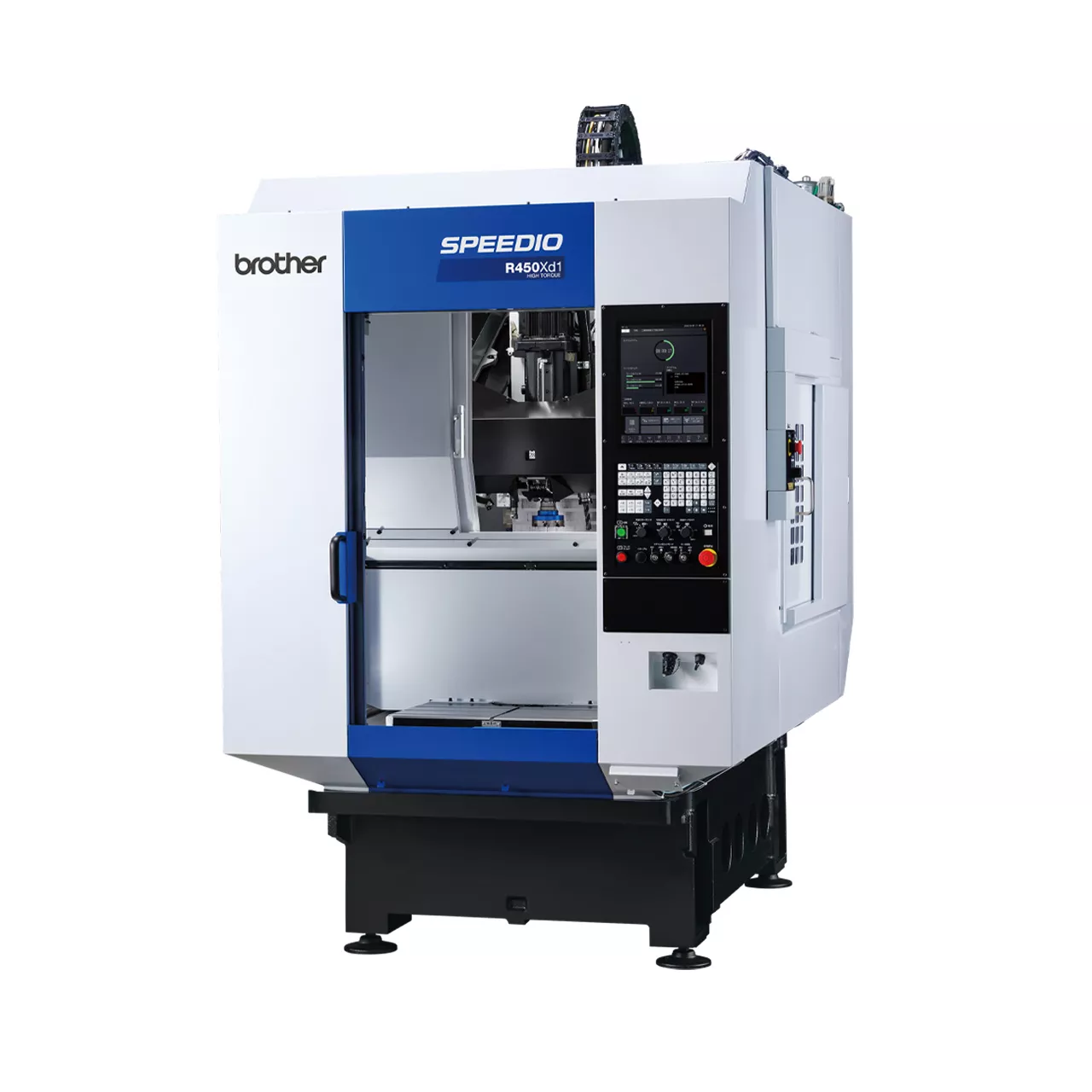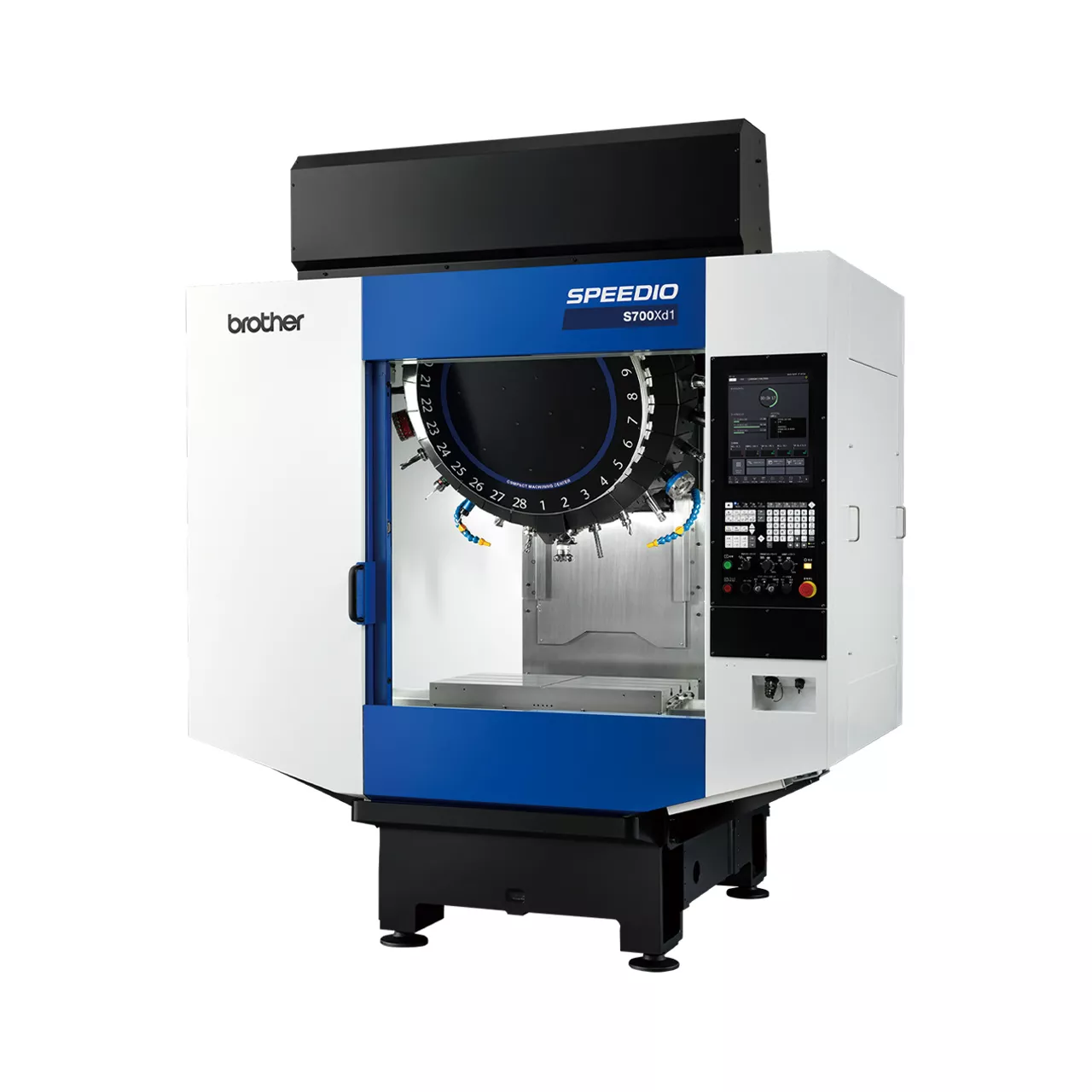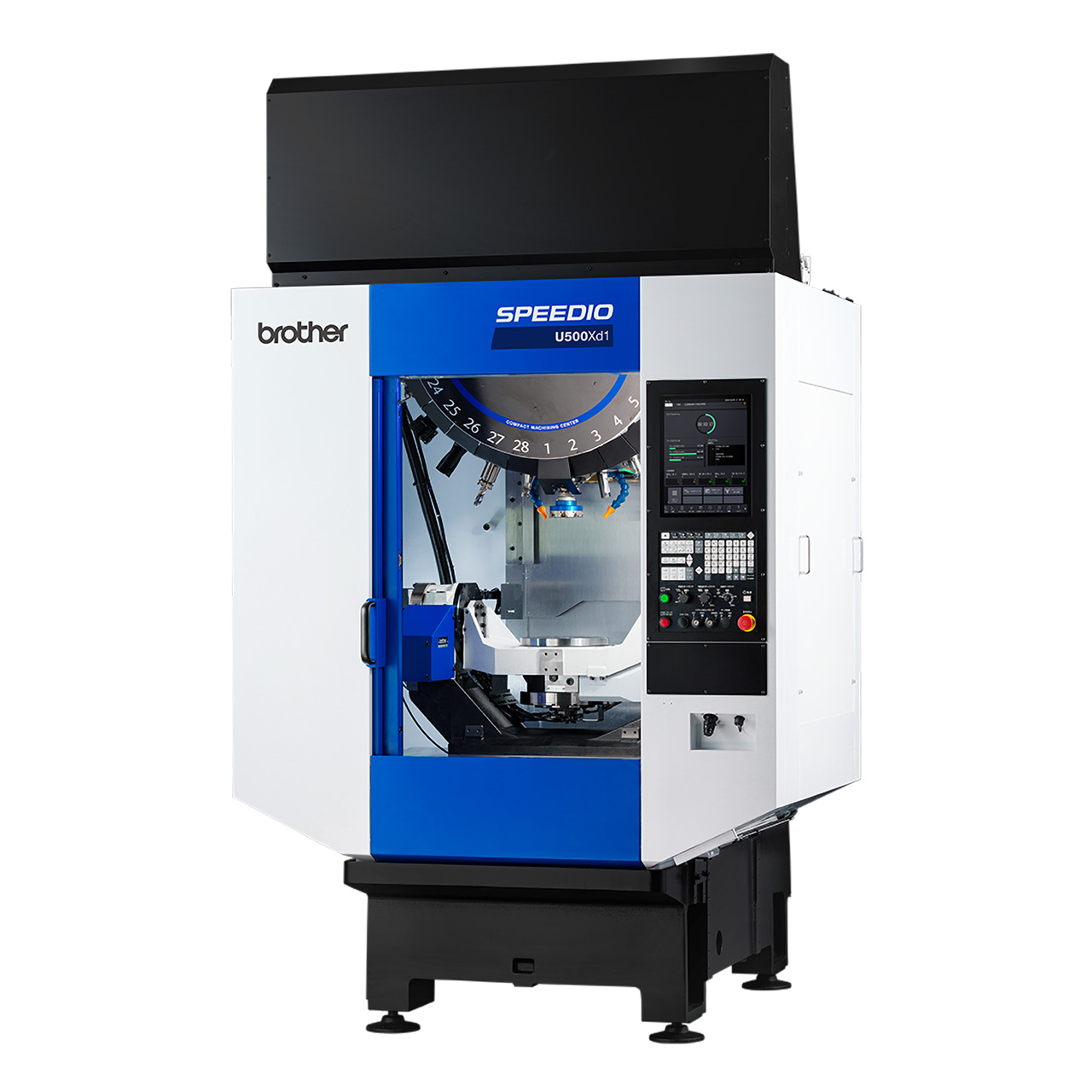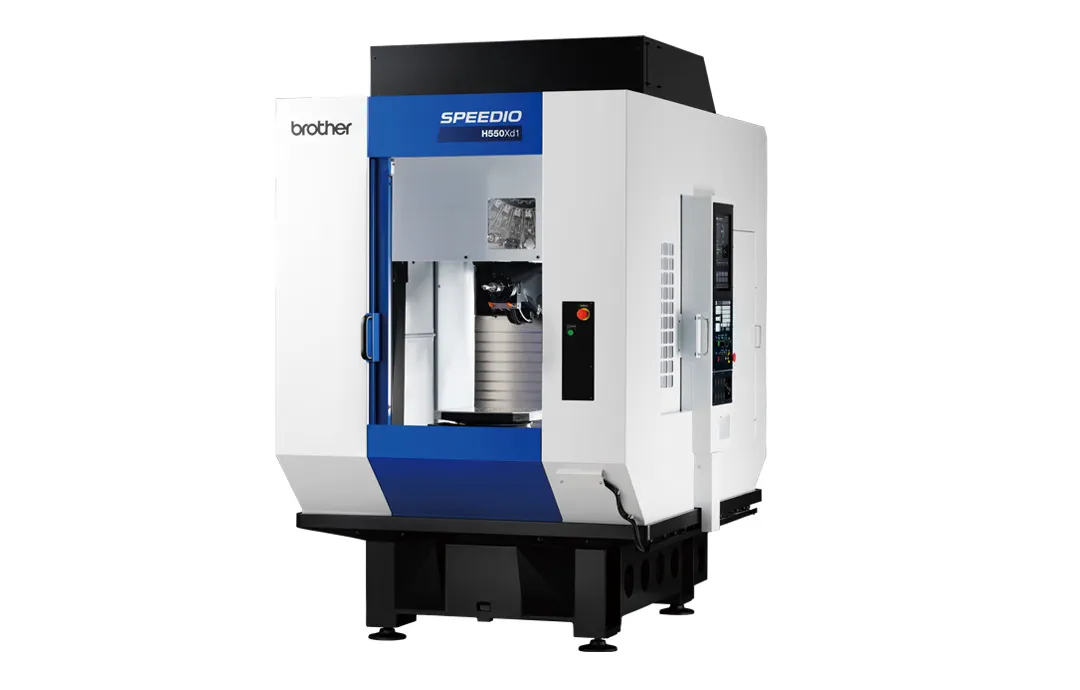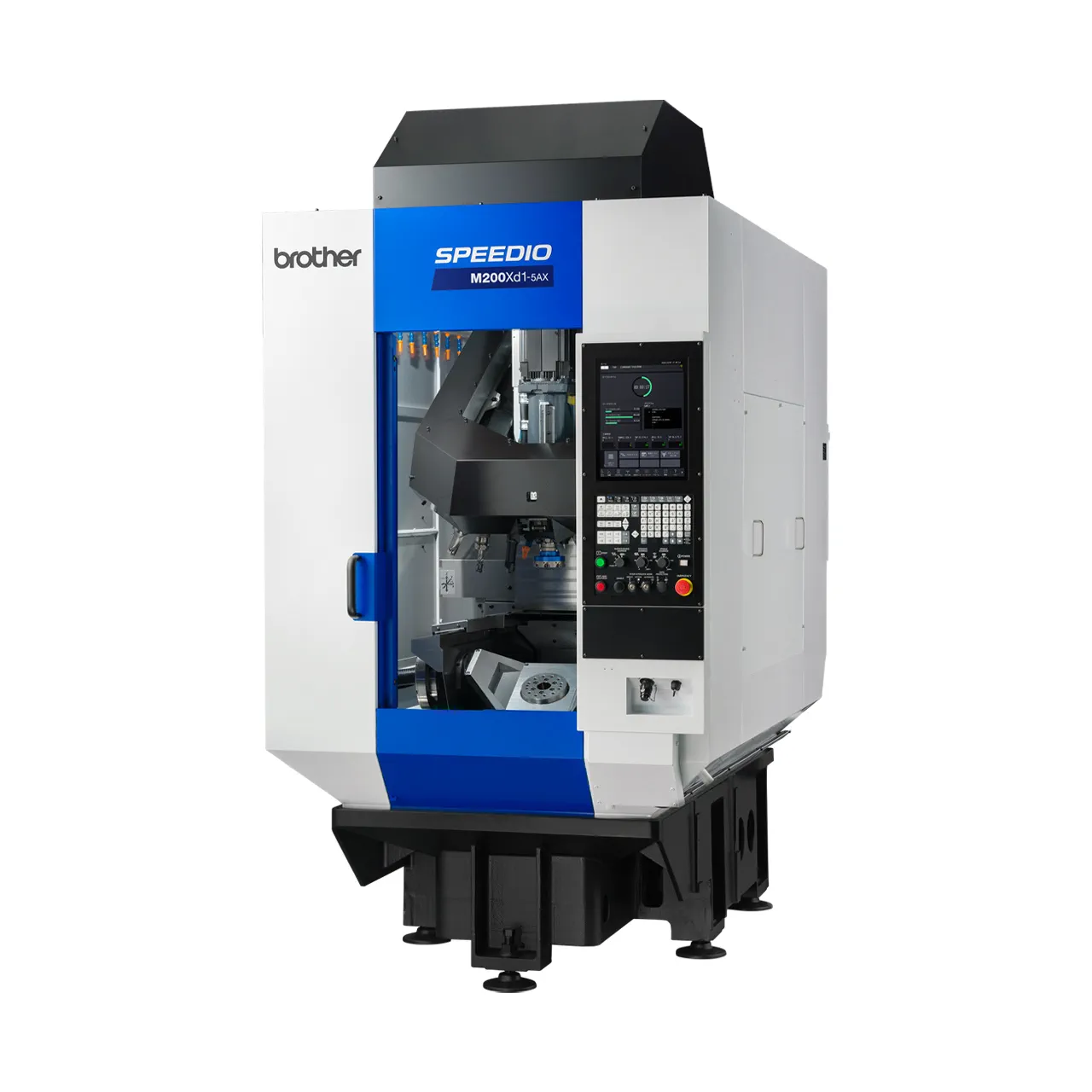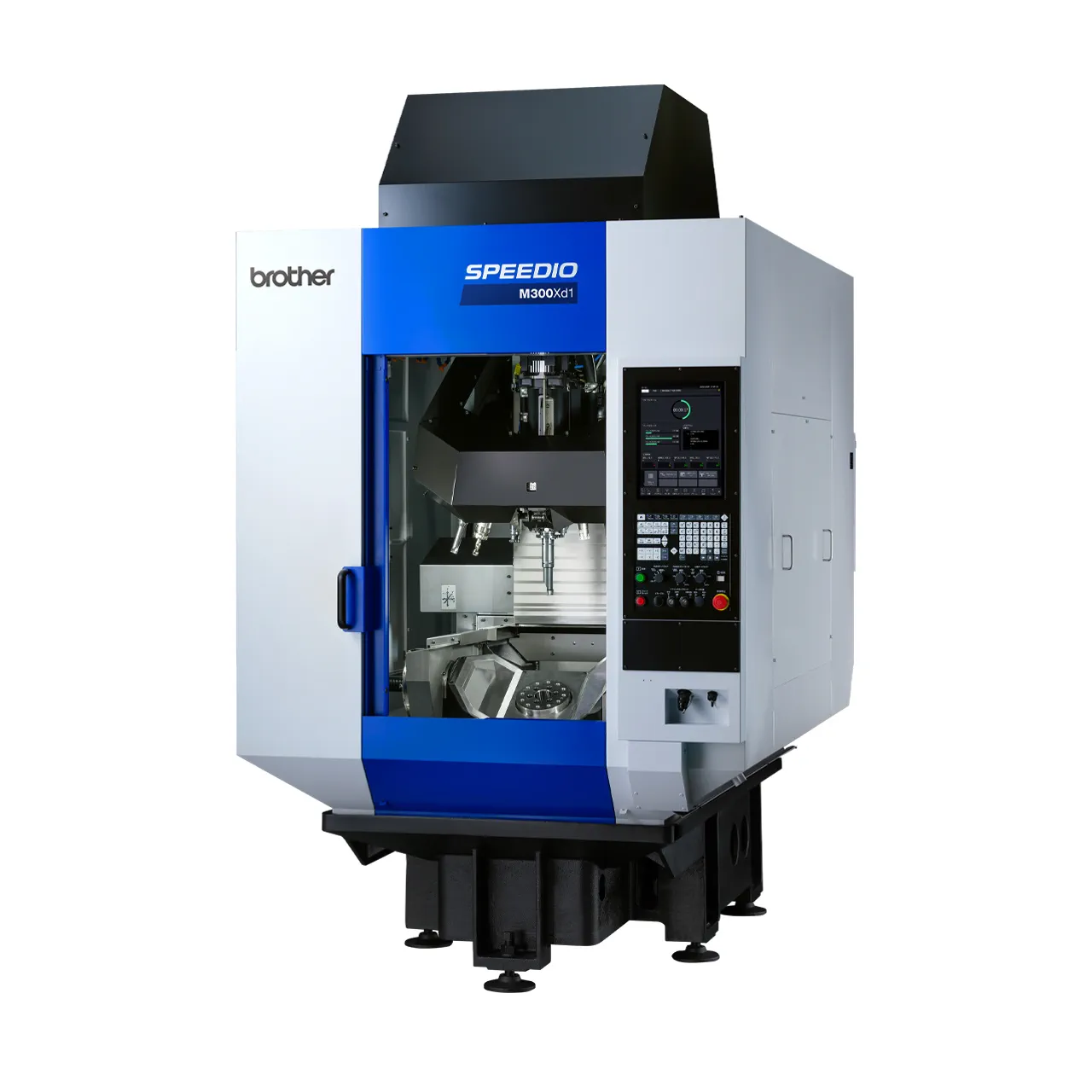
What Are Machine Tools? Definitions, Types, and Future Developments

Machine tools are vital to manufacturing, used to make various types of machines and their parts. There are various types of machine tools used for different applications. For those who want to know what machine tools are and those looking into introducing machine tools in the future, this article will revisit the definition of machine tools and describe the types and machining methods of machine tools, their history, and how to select one.






Machine Tools Defined
What kind of machine is a machine tool? We will start off by revisiting the question of what makes a machine tool.
A Machine that Produces the Required Geometry by Cutting, Grinding, etc.
A machine tool is a machine that produces the required geometry by cutting, grinding, or otherwise machining various materials. However, the term machine tool is not used to refer to power tools, which are held by hand during use, or to machinery fixed by means of a magnetic stand, etc.
Machine tools can perform the following machining processes:
- Cutting: Removing unnecessary parts of the raw material with a cutting tool
- Grinding: Eliminating surface irregularities with a grinding wheel and abrasives to improve accuracy
- Non-traditional machining: Machining with less conventional methods, such as with electricity or a laser beam
Machine tools are vital to manufacturing, used to shape materials into various types of machines and their parts. There are about 300 types of machine tools mainly for working with metal, labeled as either "machine tool" or "metal cutting machine tool." Machine tools are not only for metalworking, however. There are tools for non-metal materials such as ceramics and glass and, outside Japan, at least, woodworking tools are classified as machine tools.
The Mother of All Machines
With all the machines and their comprising parts that are made by machine tools, they are also called "mother machines" in Japanese. They are called "mother machines" as they produce other machines. Machine tools are used around the world as the starting point for all manufacturing.
Machine Tools vs. Industrial Machinery
Industrial machinery refers to machines for machining a product or a whole machine. Industrial machinery is generally installed in factories and other facilities, and can be said to refer to machines that undertake automated processes for machining products and entire machines. Industrial machinery includes everything from chemical machinery, boilers and tanks to commercial washing machines.
On the other hand, machine tools, as already mentioned, are machines for shaping product and machining metal parts. According to the Japanese Industrial Standard (JIS B 0105), machine tools are "machines that remove unnecessary portions by cutting, grinding, etc., or by using electricity or other energy to create the required shape, with the exception of machinery that is held by hand during use or fixed by means of a magnetic stand, etc."
Main Machine Tool Types and Machining Examples
According to the JIS specifications detailed by the Japan Industrial Standards Committee, machine tools include lathes, drill presses, and boring machines, all described in the next section. Here is a closer look at each.
Lathes
The lathe is the prototypical machine tool. On it, a cutting tool is applied to rotating metal workpieces to cut away the raw material, mainly into a circular or cylindrical shape.
The types of lathes are:
- Universal lathe: A lathe operated entirely by hand
- NC lathe: A universal lathe equipped with a numerical control (NC) unit. Programmed to automate machining, these stabilize work accuracy.
- Turret lathe: A universal lathe with a rotating turret of toolholders attached. The turret is rotated to switch between the multiple cutting tools.
- Vertical lathe: A lathe with the spindle mounted vertically and facing upward. When machining, the product is turned horizontally.
- Bench lathe: A lathe mounted to and used on a workbench. Used for machining small products.
- Front lathe: A lathe with a large spindle facing the operator. Uses a faceplate for machining.
Lathes can be used for facing, straight turning, tapering, boring, drilling, cutting-off, and thread cutting.

Lathes are used to machine parts such as shafts, pins, bolts, and needles.
Drill Presses
A drill press is a machine in which a drill tool is rotated to drill the material. In a drill press, the workpiece is fixed on a bench and the drill tool is rotated to perform drilling.
The types of drill presses are:
- Upright drill press: The typical drill press, in which the machine is installed on the floor and drills holes by means of a vertically-mounted spindle that moves up and down.
- Benchtop drill press: Smaller drill presses that are mounted on a workbench. Structurally, these are the same as an upright drill press.
- Multiple-spindle drill press: Has multiple drill shafts to drill multiple holes at once.
- Gang drill press: Has multiple spindle heads, each of which can be mounted with different tools.
- Turret drill press: Has a rotating turret fitted with multiple drilling heads. Capable of continuous machining without changing tools.
- Deep hole drill press: Specialized for drilling deep holes. Also known as a gun drilling machine.
- Radial arm drill press: Equipped with a rotating arm with a spindle head. The arm can also be moved horizontally, allowing it to drill multiple holes without moving the workpiece.
Machining operations performed on drill presses include drilling, boring, counterboring, thread cutting, and reaming.
Drill presses are used in applications such as drilling holes in wood and metal materials, expanding holes, and cutting threads for screws.
Boring Machines
Boring machines are used for further expanding holes in a workpiece that has already been drilled. With boring machines, a rotating cutting tool is applied to the workpiece to further open the hole.
The types of boring machines are:
- Horizontal boring machine: The spindle is mounted horizontally, making these suited to machining large holes and deep holes.
- Vertical boring machine: The spindle is mounted vertically, allowing for stable accuracy in machining.
- Jig boring machine: Highly precise due to its spindle, whose position can be adjusted with high accuracy.
- NC boring machine: Equipped with NC to automate machining operations.
Boring machines are mainly used for hole machining where high accuracy is required, such as machining for automotive engine parts.
Milling Machines
A milling machine is a machine in which a multi-bladed tool called a milling cutter is turned to cut the workpiece. With milling machines, the workpiece is fixed to a bench that can be moved up, down, left, and right, and a cutting tool mounted on the spindle is applied to the workpiece to cut it.
The types of milling machines are:
- Universal milling machine: A milling machine in which all operations are performed manually.
- NC milling machine: A universal milling machine equipped with NC to automate machining operations.
Milling machines are used to perform machining including plane machining, side cutting, step machining, groove machining, hole machining, and 3D machining. They are used for machining molds, mechanical parts, and other parts of complex geometry.
Grinding Machines
Sometimes called a grinder, a grinding machine is a machine in which workpieces made of various materials are put in contact with a high-speed grinding wheel to grind down the surface. Grinding machines are mainly used for surface finishing and can be used to machine cylindrical workpieces, flat workpieces, and hard metals with high accuracy.
The types of grinding machines are:
- Surface grinding machine: Grinds the surface of a workpiece. On many surface grinding machines, the workpiece is machined by passing it back and forth in parallel with the circumference of the grinding wheel.
- Cylindrical grinding machine: Used to grind the outside of cylindrical workpieces.
- Internal grinding machine: Used to grind the internal area of cylindrical holes.
- Tool grinding machine: Used for grinding specific tools.
- Centerless grinding machine: Used to grind cylindrical workpieces without chucking.
- Jig grinding machine: Used for machining the internal area of holes, such as for a punching die.
- Form grinding machine: A surface grinding machine that uses a grinding wheel that matches the workpiece geometry.
- NC grinding machine: A grinding machine equipped with NC to automate machining operations.
Grinding machines are mainly used for finishing precision parts.
Machining Centers
A machining center is an NC machine tool that uses a rotating tool to perform continuous machining for multiple types of machining, such as boring, milling, drilling, and threading. Machining centers come equipped with an automatic tool changer (ATC), and by setting a program on the NC unit, both machining and tool changing can be automated.
The types of machining centers are:
- Gantry machining center: A machining center with a spindle hanging down from overhead within the gantry.
- Horizontal machining center: A machining center with tools mounted on the bottom and horizontally.
- Vertical machining center: A machining center with the spindle mounted perpendicular to the ground.
- 5-axis machining center: A machining center with two rotation axes in addition to the vertical, horizontal, and height axes.
Machining centers are used for machining metal parts, such as cutting and drilling for automotive engine parts, and mold manufacturing for body parts.
For more information, see this article:
"What Is a Machining Center? The Basics on Structure, Types, Benefits, etc."
Multi-Tasking Machines
A multi-tasking machine is an NC machine tool that can perform multiple machining operations, equipped with an automatic tool change feature. Generally, it takes at least two machine tools to complete one part from raw material to finishing. However, using a multi-tasking machine, the whole process from raw material to finishing can be performed with a single machine.
Multi-tasking machines are capable of making parts such as driveshafts and pump covers.
For more information, see this article:
"What is a Multi-Tasking Machine? Advantages of Multi-Tasking Machines and How They Differ from Machining Centers Explained"
Gear Cutters
A gear cutter is a machine that cuts gears using tools such as a hob cutter, pinion cutter, or rack cutter. With gear cutters, gears of various shapes are made by cutting to form gears.
There are five main types of gear cutters:
- Hob machine: Machines by spinning a cutting tool called a hob attached to the spindle.
- Gear grinder: Forms gears using a high-speed grinding wheel.
- Bevel gear cutter: Specialized for bevel gears, this cuts the gears with a multi-blade cutting tool.
- Gear shaper: Cuts gears using pinion and rack cutters.
- Gear shaving machine: For finishing gears.
Gear cutters are used in the manufacture of gears that require high accuracy, in applications such as electric vehicles, robots, and industrial machinery.
NC Machine Tools: Part Names and How They Work
Here, we will name the parts of NC machine tools equipped with numerical control units and how they work.

Motor
The motor is what drives the tool to perform machining operations according to the program loaded into the NC unit. The program loaded determines the direction and rotational speed for motor movement.

Chuck
The base for holding workpieces. These come in many types, such as scroll chucks, which hold the workpiece using a jaw; collet chucks, which hold on with a notched cylinder; and power chucks, which hold on with the machine's hydraulic pressure.

Turret
Turrets are a polygonal-shaped component which can have a tool holder and tools mounted on each face. Holders and tools can come in a variety of shapes and mounting orientations to suit different applications.

Hydraulic Unit
The hydraulic unit is what makes various tool parts move. It adjusts pressure for the chuck, swivels the turret, and advances and retracts the tailstock.

Workpiece
A workpiece refers both to pieces that have been machined out of a material or works in progress prior to machining.

NC Control Panel
Used to control machining center motions. The NC control panel can be used to adjust factors such as the rotational speed of the used tools and spindle speed, table position, or travel distance.
The Past and Future of Machine Tools
As mankind's manufacturing evolves, machine tools evolve right with it. Here is a closer look at the history of the machine tools that have made our lives more convenient, both now and in the past.
Origins Dating Back to Ancient Egypt
Traced back to their origins, murals of machine tools drawn in ancient Egypt have been found. The mural depicts a bow drill, in which a bow is pushed back and forth to rotate a drill. The bow drill is a type of machine tool and is considered the oldest example of a drill press. A similar system was adapted into the lathe.
Modern metalworking began back in the 16th century, from which time metal materials were used in structures, and large machine tools employing water wheels and steam started to appear. Motors were developed toward the end of the 19th century and were used to power machine tools upon entering the 20th century.
Japanese Manufacturers Ranked Top Three in the World for Machine Tools Since 1980
First developed in the United States in the 1950s, NC technology was further developed and popularized through the hard work of Japanese machine tool manufacturers, until Japanese machine tools reached worldwide acclaim from the late 1970s onward.
Since surpassing the United States in 1982 to rank first in the world in terms of machine tool production value by country or region, Japan has consistently maintained its position in the top three in the world. Japanese machine tools are highly trusted worldwide, and Japan is recognized as a major manufacturer of machine tools.
It is no exaggeration to say that the level of machine tools is a display of the country's technological capabilities. The Japanese manufacturing industry remains world-class, thanks in part to the sophistication of its machine tools.
The Target for Machine Tools
With AI and robots, the recent progress in IT technology has been nothing short of remarkable. These technologies have already permeated our daily lives and are used in a variety of products, and thus, high accuracy is also demanded of our machine tools.
What's more, as labor shortages become more serious with the declining birthrate and aging population, hopes in manufacturing are high for machine tools to fuel automation and labor savings. To keep quality at a constant level with a manpower reduction, future development is expected to move toward full automation.
What Will Be Asked of Future Machine Tools? How to Choose One?
For companies considering introduction in the future, what kind of machine tools should you select? The first step is to identify your current and future challenges, and then select the machine tools that will help solve these challenges and grow your company. This section outlines the characteristics of machine tools that help solve challenges faced by the manufacturing industry and how to choose the right ones.
High Accuracy
To keep pace with evolving technologies like the shift to electric vehicles and developments in autonomous driving, manufacturing sites must produce parts and products with greater accuracy. In the future, demand is only going to grow for higher accuracy in various products. When choosing a machine tool, the machines chosen will need the abilities to automate precision work and produce parts with high accuracy.
Rigidity
Rigidity in a machine tool means that the machine is sturdy and its machining accuracy is stable. When choosing a machine tool, it is important to look for high rigidity. Inadequate rigidity can result in deformation of the machine tool itself and, consequently, a decrease in machining accuracy.
Efficiency
More efficient machine tools can help to reduce manpower and increase profits. Introducing NC machine tools that can automate work and multi-tasking machines that handle everything from material machining to finishing will enable fast, highly accurate mass production of products at a stable quality while reducing the number of operators. In addition, unlike human labor, machine work eliminates quality inconsistencies from differences in operators and reduced efficiency from fatigue.
When introducing a machine tool, choose a machine that is highly accurate, stable, fast in machining, and efficient.
Price
With the high price of machine tools, it is easy to lean towards selecting ones that will keep introduction costs to a minimum. However, we recommend to include operational costs with maintenance and repairs into cost comparisons.
It is also important to check the service life. While machine tools with a shorter service life may carry a lower introduction cost, the interval between upgrades will also be shorter, consequently increasing the running costs.
Selecting a Machine Tool With the Functions and Size that Match Your Products
Machine tools come in various types. Machine tools are used to manufacture various products indispensable to modern life, and they will only continue to evolve and make our lives richer.
For companies considering an introduction, whether to upgrade their machine tools or as a manpower reduction, in addition to the factors described above, we recommend viewing the actual product to check size and consulting with the manufacturer before making your selection.

Author: Miyuki Takahashi

Editor: EGGO CO., LTD.
Related Articles


"CAD/CAM," and Why It's Required to Use 5-Axis Machining Centers. Key Points for Adoption and How to Choose



